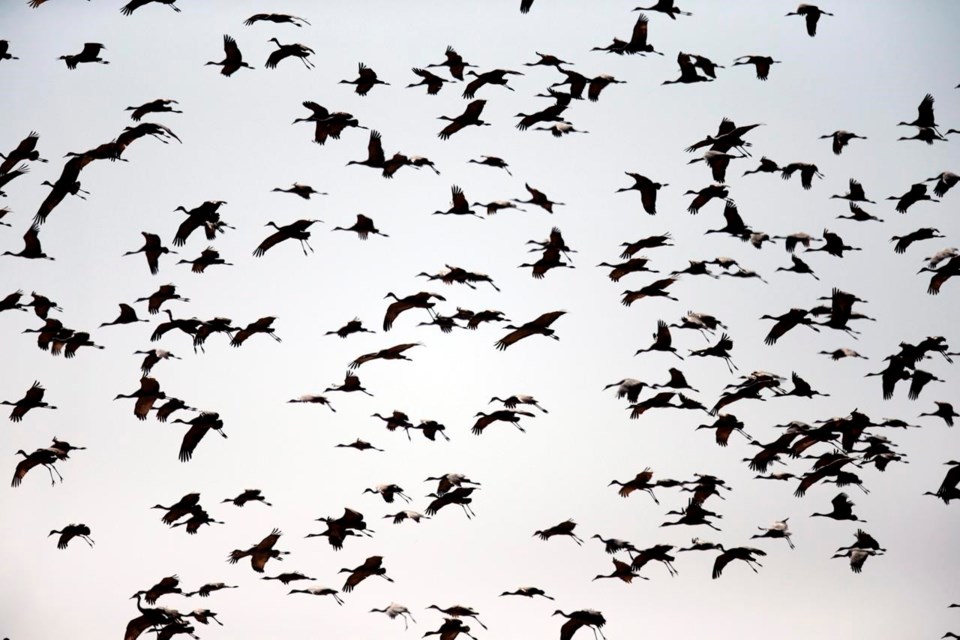EDMONTON — Alberta environmentalists are opposing the provincial government's consideration of a hunting season for sandhill cranes and tundra swans.
"There doesn't seem to be the numbers behind it to justify it," said Nissa Pettersen of the Alberta Wilderness Association.
"The scientific evidence isn't really available to suggest that this would be a sustainable hunt."
The issue arose again — Alberta decided against sandhill crane hunts in 2009, 2013 and 2014 — after the Canadian Wildlife Service proposed in December that the province open a fall sandhill season.
"The proposed sandhill crane season would provide a new hunting opportunity in Alberta and provide a mechanism to deal with crop depredation issues caused by cranes," the report says.
"This has been the subject of repeated requests by both resident and non-resident hunters as well as Alberta agricultural producers."
Provincial Environment Minister Jason Nixon told the magazine Alberta Outdoorsmen that he has asked his department to look into seasons for both cranes and tundra swans.
"I have challenged my department to open a season (for cranes)," he was quoted as saying in the March issue.
"There are some concerns about the overlap of tundra swans and trumpeter swans in Alberta, but I have challenged my staff to come back with options."
Nixon's department declined to elaborate on his remarks.
The wildlife service report does not include a proposal to allow a tundra swan hunt.
Populations of both birds — among North America's largest, standing over a metre tall with two-metre wingspans — are considered healthy. There are over 600,000 sandhill cranes and 140,000 tundra swans across North America.
The service says crane numbers are well over their management targets.
Although there is no Canadian swan hunt, crane seasons exist in Saskatchewan and Manitoba. Tundra swans are hunted in some U.S. states.
In a letter to the wildlife service, the wilderness association points out the cranes depend wetlands during their migration from Canada's North into the U.S. Those wetlands are disappearing at an increasing rate.
As well, sandhill cranes have a low birth rate. Crane pairs, which mate for life, produce most of their eggs after they've been together for at least three years.
"If their habitat is compromised and they have questionable reproductive success, it's hard to be able to tell even after one year of hunting whether the population would be able to bounce back," Pettersen said.
The association says both proposed hunts threaten the endangered whooping crane, which uses some of the same migration routes and could be mistaken for either bird.
"We ... feel strongly that this hunt must not be allowed," said the association's letter to the wildlife agency.
Pettersen discounts concerns about the birds eating crops in the field. She notes that when that argument was made during the last debate over hunting, the total of actual complaints against the birds was five.
This report by The Canadian Press was first published April 3, 2020.
— Follow Bob Weber on Twitter at @row1960
Bob Weber, The Canadian Press


